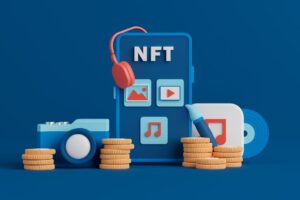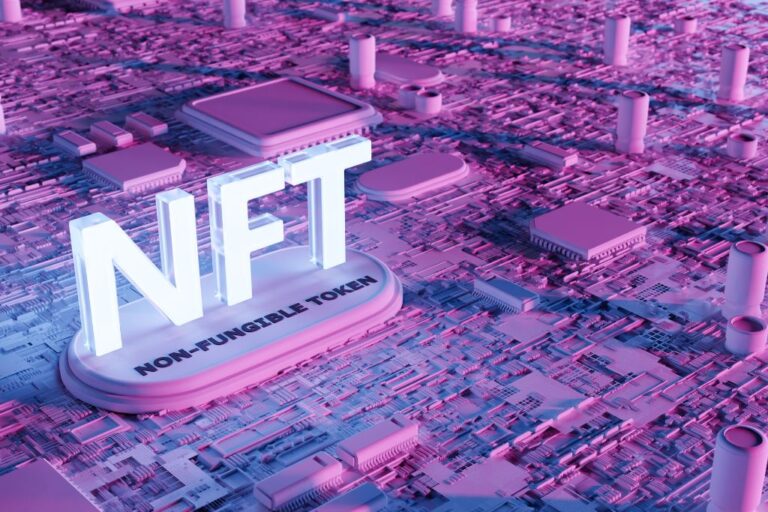The world of cryptocurrencies and blockchain technology continually evolves, offering new methodologies for investment and profit. Among these novel concepts, Non-Fungible Tokens (NFTs) and the process of minting them have become increasingly popular. However, the cost of minting NFTs, particularly high commissions, can be a significant deterrent for many. This article aims to guide you on how to avoid high NFT minting costs, providing you with a comprehensive understanding of the issue and offering solutions.
Understanding NFTs and Minting: A Brief Overview
NFTs, or Non-Fungible Tokens, are unique digital assets that represent real-world objects like art, music, in-game items, and videos. They are built on blockchain technology, most commonly on Ethereum, and each NFT has a digital signature that distinguishes it from other tokens, making it non-interchangeable or non-fungible.
Minting is the process of turning a digital asset into an NFT on the blockchain. It involves creating a new token, assigning it a unique identifier, and adding it to the blockchain’s ledger. This process requires computational power and energy, which incurs a cost known as ‘Gas Fee’ in the Ethereum network. The minting process, accompanied by these fees, is a critical aspect to consider when dealing with NFTs.
While the concept of NFTs and minting sounds promising, it’s not without its challenges. One of these challenges is the high commission rates associated with the minting process.
What are high NFT minting commissions?
High NFT minting commissions refer to the substantial costs associated with the minting process. These commissions are charged by the blockchain network for the computational power and energy required to mint the NFTs. In the Ethereum network, this fee is often volatile, fluctuating based on network congestion and demand.
High minting commissions can be a significant barrier for creators and investors, particularly those new to the space. These costs can greatly reduce the profit margins, making NFT minting less attractive and potentially unprofitable, especially for smaller or less valuable assets.
Factors Contributing to High NFT Minting Commissions
Several factors contribute to high NFT minting commissions. Firstly, the network’s congestion significantly impacts the fee. During periods of high demand, the network becomes congested, causing an increase in the gas fee.
Secondly, the complexity of the NFT also contributes to the cost. More complex NFTs require more computational power and energy to mint, increasing the gas fee. NFT games, for example, often have multiple layers of data and require more power to mint.
Lastly, the value of Ether (ETH), the native cryptocurrency of the Ethereum network, also impacts the minting fee. When the value of ETH rises, so does the cost of minting.
How to Avoid High NFT Minting Costs?
There are several strategies on how to avoid high NFT minting commissions. Firstly, minting during periods of low network congestion can significantly reduce the cost. This could mean minting during off-peak hours or when there is less demand on the network.

Secondly, choosing simpler NFTs to mint can also lower costs. NFTs with less data require less computational power and energy to mint, reducing the associated fee.
Thirdly, using other blockchain networks for minting can also help. While Ethereum is the most popular network for NFTs, other networks like Binance Smart Chain (BSC) and Flow offer lower minting costs.
Lastly, using layer-2 solutions, secondary networks, or chains that run on top of the main blockchain, can also reduce costs. These solutions can handle transactions off the main chain, greatly reducing the associated fees.
Resources and Tools for NFT Minting and Cost Management
Several resources and tools can help manage NFT minting costs. Platforms like OpenSea provide users with the option to mint on demand, meaning the NFT is only minted when it is purchased, reducing upfront costs.
Tools like GasNow and Etherscan provide real-time information on gas fees, helping users to identify optimal times for minting. These tools can be instrumental in managing and predicting costs.
NFT minting platforms like Mintable and Rarible also offer gasless minting options, absorbing the gas fee until the NFT is sold. This can be particularly useful for creators starting in the NFT space.
Moreover, layer-2 solutions like Polygon provide lower-cost alternatives for minting NFTs. They handle transactions off-chain, reducing the load on the main network and subsequently the cost. That’s why Polygon has attracted lots of builders to make dApps and NFT games on top of it.
Conclusion: Towards a More Affordable NFT Ecosystem
The high cost of NFT minting, driven by factors such as network congestion, the complexity of the NFT, and the value of ETH, presents a significant challenge for creators and investors alike. However, with strategic planning and the use of available resources and tools, these costs can be managed and even reduced.
The evolution of the NFT ecosystem, including the development of new blockchain networks and layer-2 solutions, promises a future with more affordable NFT minting. Nevertheless, for those keen on exploring the NFT space right now, understanding how to avoid high NFT minting is crucial.

A computer engineer by day, gamer by night. He grew up playing Mario and contra, and just like every other 90s kid, he got passionate about mobile gaming. He had done bachelors in computer science and played fps and MOBA games for years.

